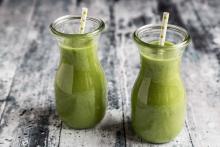Those of us treating nonalcoholic fatty liver disease (NAFLD) often find ourselves having similar conversations with our patients. After diagnosis, our next step is usually describing to them how they can improve their outcomes through a healthy diet and exercise.
We can point to the latest data espousing the benefits of moderate weight reduction. The recently released American Gastroenterological Association (AGA) Clinical Practice Update gives us compelling evidence of what can be achieved with specific thresholds of total body weight loss: >5% can decrease hepatic steatosis, >7% potentially leads to resolution of nonalcoholic steatohepatitis, and >10% possibly allows for regression or stability of fibrosis.
More often than not, our patients then ask us, “What diet do you recommend?”
The AGA’s Clinical Practice Update recommends that people with NAFLD follow the Mediterranean diet, minimize saturated fatty acid intake (specifically red and processed meat), and limit or eliminate consumption of commercially produced fructose.
It’s a tried-and-true, evidence-based recommendation. Yet, recent data suggest that modifying the Mediterranean diet so that it’s further enriched with specific green polyphenols may yield even more benefits to at-risk patients.
The upside of a greener Mediterranean diet
In a recently published study, investigators behind the DIRECT-PLUS clinical trial randomly assigned 294 participants with abdominal obesity/dyslipidemia into three diet groups (all accompanied by physical activity): standard healthy dietary guidelines (HDG), standard Mediterranean, and the so-called green Mediterranean diet.
Both Mediterranean diet groups were calorie restricted and called for 28 g/day of walnuts (+440 mg/day polyphenols provided). However, the green Mediterranean diet was further supplemented with 3-4 cups/day of green tea and 100 g/day of Mankai (a Wolffia globosa aquatic plant strain) in the form of frozen cubes turned into a green shake that replaced dinner (+1,240 mg/day total polyphenols provided). The percent change in intrahepatic fat content was quantified continuously by proton magnetic resonance spectroscopy. NAFLD was defined as an intrahepatic fat content of >5%.
After 18 months, the prevalence of NAFLD declined to 54.8% in the HDG group, 47.9% in the standard Mediterranean group, and 31.5% in the green Mediterranean group. Both Mediterranean groups achieved similar moderate weight loss and had significantly higher total plasma polyphenol levels versus the HDG group. However, the green Mediterranean group achieved significantly greater proportional intrahepatic fat content loss (-38.9%) than both the standard Mediterranean (-19.6; P = .023) and HDG (-12.2%; P < .001) groups.
In isolating the individual components of the diets, researchers determined that the degree of intrahepatic fat content loss was significantly associated with increased Mankai and walnut intake, decreased red/processed meat consumption, improved serum folate and adipokines/lipids biomarkers, and changes in microbiome composition and specific bacteria.
The authors suggest that the mechanisms by which polyphenols reduced steatosis and prevented liver injury may include reduced de novo lipogenesis, increased fatty acid oxidation, and reduced oxidative stress.
In an additional analysis, DIRECT-PLUS investigators also revealed the beneficial effects of the green Mediterranean diet on cardiometabolic health. Although both Mediterranean diets achieved similar weight loss (-6.2 kg for green Mediterranean and -5.4 kg for standard Mediterranean), which was superior to that observed in the HDG group (-1.5 kg; P < .001), the green Mediterranean group had a greater reduction in waist circumference than the standard Mediterranean group (-8.6 vs. -6.8 cm, respectively; P = .033). Within 6 months, the green Mediterranean group also achieved a greater decrease in low-density lipoprotein cholesterol levels, diastolic blood pressure, and insulin resistance.

